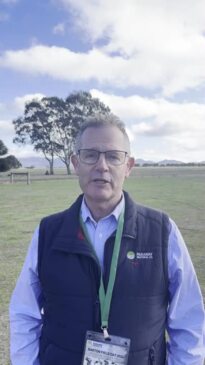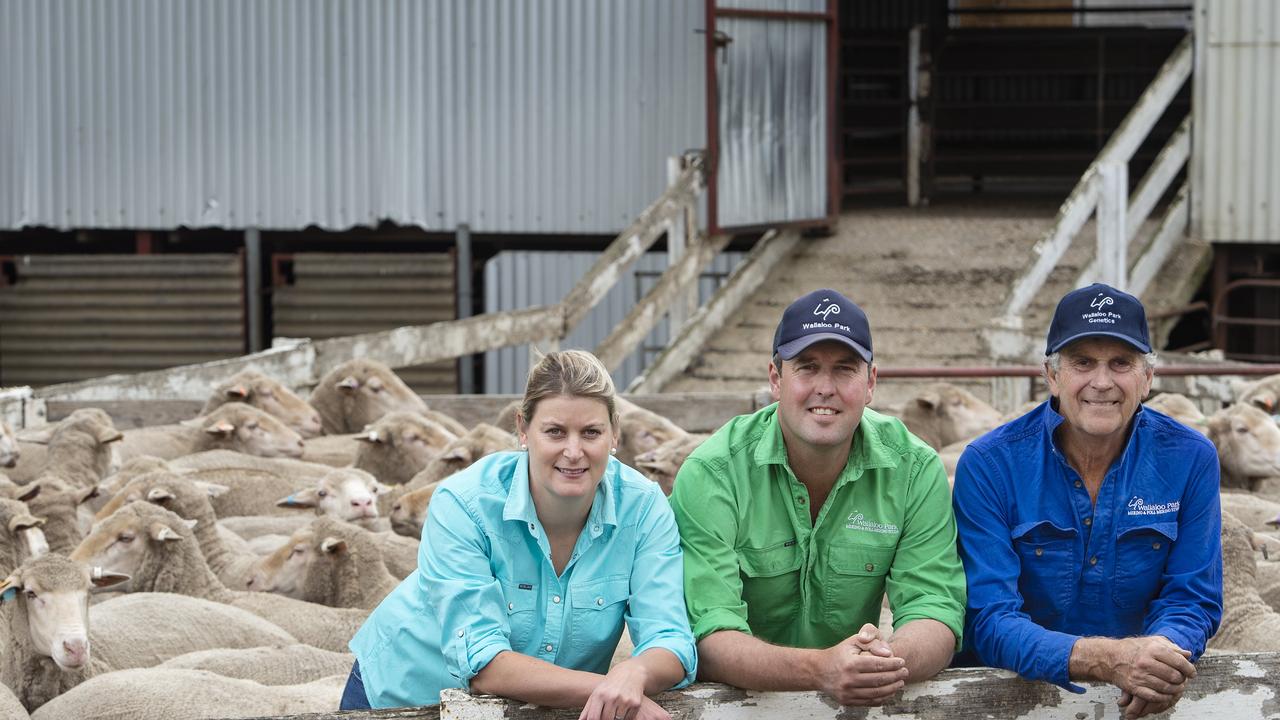Pastoral giant outlines why net zero is crucial
More efficient production is the first major step towards reducing emissions, Paraway boss Harvey Gaynor says, but a big tech breakthrough is needed to curb methane.

One of Australia’s pastoral giants says producing meat and wool as efficiency as possible was one of the key ways it was reducing its methane footprint from a 2021 baseline.
This was one of the take home messages from a Net Zero, Better for Business field day, attended by around 200 people, at Paraway’s Barton Station, Willaura, in western Victoria last week.
But, in addition to sharper on-farm management, a big technological breakthrough was needed to produce a real “step change” in slashing methane output on farm Paraway’s chief executive Harvey Gaynor told The Weekly Times.
Reducing emissions was “one of the first things our investors now ask about”, Mr Gaynor said.
Overseas regulations, investors and debt and equity financiers were already pushing for reductions in emissions.
“Supply chains customers would also start to either put pressure on or provide rewards for low intensity production,” Mr Gaynor said.
Paraway has committed to reduce its on-farm methane intensity by at least 30 per cent by 2030, in line with the Global Methane Pledge, and aims to reach net zero emissions by 2040.

Mr Gaynor said the goal was a “moral obligation”, and that emissions generated through “our activities do have global impacts”.
He said “improving our productivity was the best thing we can do to reduce our emissions intensity right now”.
“Some of the challenges we have, are about measuring or modelling emissions in biological systems – that’s always going to be hard for us – and that makes it hard to have the conversation with others about how we are going and what we are doing,” Mr Gaynor said.
“We also know we are going to rely on some technological innovations and improvements to make a real step change at some stage in the next decade or so.
“We can improve our productivity at a reasonable rate – a couple of per cent a year maybe if we are going well – but we need some big innovations that might drop our (methane) production in the tens of per cents, and I am sure that will come along.”
In the southern properties, emissions had been reduced by focusing on issue like increased lamb survival and getting stock to sale weight faster.
Mr Gaynor told the field day that Paraway’s operations employed 254 full time and seasonal staff over a total area of 4,481,370ha, running 515,000 cattle and sheep, plus 20,000ha of cropping. The business was spread over stations in Queensland, NSW and Victoria/Riverina. In this southern section seven properties over 236,000ha ran 210,000 sheep and 6000 cattle and produced 1.4m kg of wool.
For Paraway, 96 per cent of its emissions came from livestock methane.





